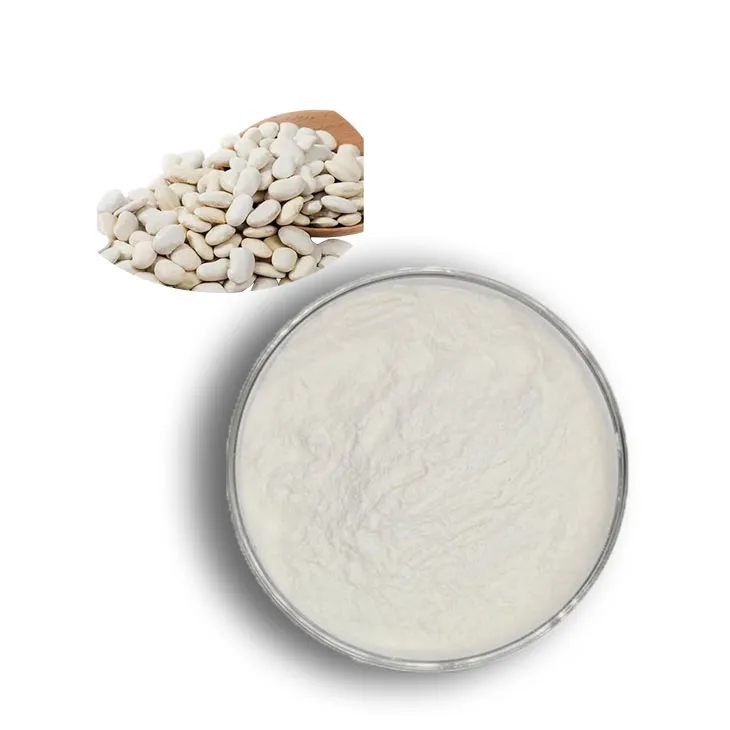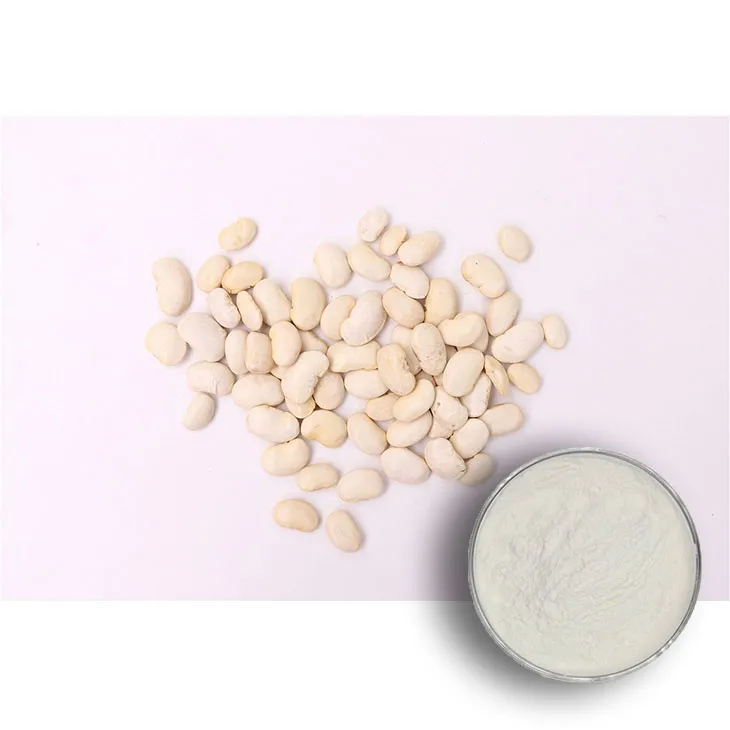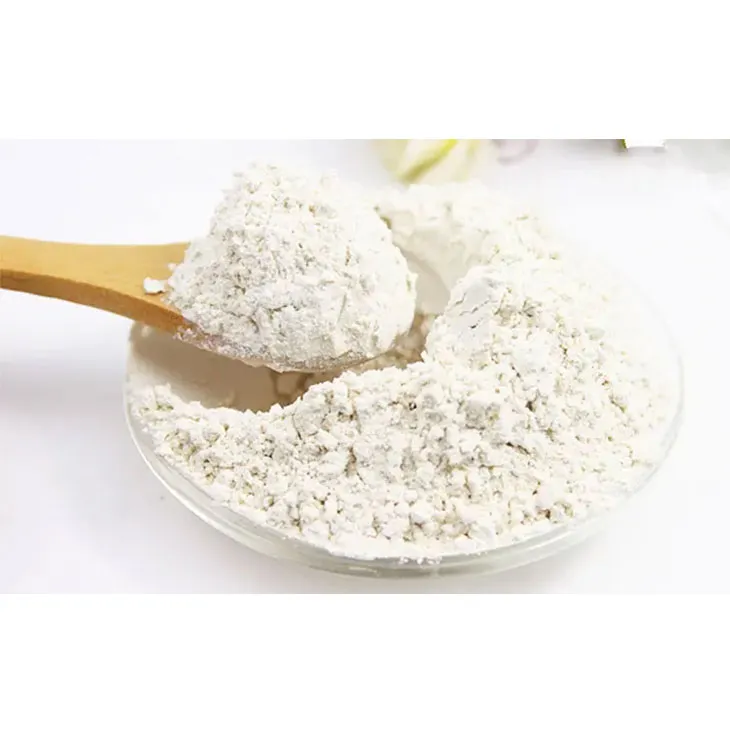- 0086-571-85302990
- sales@greenskybio.com
The best method for extracting kidney bean extract.
2024-11-30

1. Introduction
Kidney beans are not only a common ingredient in the kitchen but also a valuable source for various bioactive compounds. Extracting Kidney Bean Extract has become an important area of study, especially in the fields of food, medicine, and cosmetics. The extract contains components such as proteins, peptides, and phenolic compounds, which possess antioxidant, anti - inflammatory, and hypoglycemic properties. In this article, we will explore the best methods for extracting Kidney Bean Extract in detail, providing valuable information for related industries and research.

2. Selection of raw materials
2.1 Quality of kidney beans
The quality of kidney beans is crucial for obtaining a high - quality extract. Firstly, fresh and intact kidney beans should be selected. Avoid using beans that are moldy, damaged, or have been infested with pests. High - quality kidney beans are rich in nutrients and bioactive substances, which can ensure a higher yield and better quality of the extract.2.2 Varieties of kidney beans
There are different varieties of kidney beans, and their chemical compositions may vary slightly. For example, some varieties may have a higher content of certain proteins or phenolic compounds. Depending on the intended use of the extract, a suitable variety of kidney beans should be chosen. For instance, if the goal is to obtain an extract with high antioxidant properties, a variety known for its high phenolic content might be preferred.
3. Pretreatment of kidney beans
3.1 Cleaning
Thorough cleaning is the first step in the pretreatment process. Kidney beans should be washed multiple times with clean water to remove dirt, dust, and any impurities on the surface. This helps to prevent contamination during the extraction process and ensures the purity of the extract.3.2 Soaking
Soaking kidney beans is an important pretreatment step. Soak the selected kidney beans in water for a certain period, usually 4 - 8 hours. Soaking can soften the beans, making it easier to break them down during the extraction process and facilitating the release of intracellular components. Moreover, soaking can also help to remove some anti - nutritional factors present in kidney beans.3.3 Drying
After soaking, the kidney beans need to be dried. This can be done using natural drying or low - temperature drying methods. The purpose of drying is to reduce the moisture content of the beans, which is beneficial for subsequent extraction operations. Drying also helps to prevent the growth of microorganisms during the extraction process.
4. Extraction methods
4.1 Solvent extraction
- Solvent selection: Different solvents can be used for Kidney Bean Extraction. Commonly used solvents include water, ethanol, methanol, and their mixtures. Water is a green and safe solvent, and it is suitable for extracting water - soluble components such as proteins and some polysaccharides. Ethanol and methanol are more effective in extracting phenolic compounds and some small - molecule bioactive substances. For example, when extracting phenolic compounds from kidney beans, a 70% ethanol solution is often used.
- Extraction process: The solvent extraction process usually involves mixing the pretreated kidney beans with the selected solvent in a certain ratio. For example, a ratio of 1:10 (kidney beans: solvent) can be used. Then, the mixture is stirred at a certain speed and temperature for a specific period. For water extraction, the temperature can be set at around 50 - 60 °C, and the stirring time can be 2 - 3 hours. After that, the mixture is filtered to obtain the extract solution.
4.2 Enzymatic extraction
- Enzyme selection: Enzymatic extraction is a more specific and efficient method. Commonly used enzymes for kidney bean extraction include cellulase, protease, and pectinase. Cellulase can break down the cell wall structure of kidney beans, which is mainly composed of cellulose. Protease can hydrolyze proteins into peptides and amino acids, making them more easily extracted. Pectinase can degrade pectin substances in the beans, facilitating the release of intracellular components.
- Extraction process: First, the pretreated kidney beans are mixed with the selected enzyme solution. The enzyme concentration, pH value, and temperature need to be carefully controlled. For example, when using cellulase, the enzyme concentration can be 0.5 - 1.0%, the pH value can be adjusted to 4.5 - 5.5, and the temperature can be set at around 40 - 50 °C. The mixture is incubated for a certain period, usually 1 - 3 hours. After the enzymatic reaction is completed, the reaction mixture is heated to inactivate the enzyme, and then filtered to obtain the extract.
4.3 Supercritical fluid extraction
- Principle: Supercritical fluid extraction is a relatively advanced extraction method. Supercritical fluids, such as supercritical CO₂, have properties between liquids and gases. They can penetrate into the pores of the kidney beans more easily, and can selectively extract target components. The solubility of supercritical fluids can be adjusted by changing the pressure and temperature.
- Extraction process: In the supercritical fluid extraction of kidney beans, CO₂ is often used as the supercritical fluid. The kidney beans are placed in the extraction chamber, and the pressure and temperature are adjusted to make CO₂ reach the supercritical state. For example, the pressure can be set at 10 - 30 MPa, and the temperature can be 35 - 60 °C. The supercritical CO₂ is then passed through the kidney beans for a certain period, usually 1 - 2 hours, to extract the target components. After that, the pressure is reduced to separate the extract from the supercritical fluid.

5. Comparison of extraction methods
5.1 Yield and quality of the extract
- Solvent extraction: This method can generally obtain a relatively high yield of the extract, especially when using a mixture of solvents. However, the quality of the extract may be affected by the solvent residue. For example, if ethanol is used, there may be a small amount of ethanol remaining in the extract, which may need to be removed further.
- Enzymatic extraction: It can produce an extract with high purity and specific bioactive components. The enzymatic reaction can be targeted to break down certain substances in the kidney beans, resulting in a more purified extract. However, the cost of enzymes and the complexity of the reaction conditions may limit its large - scale application.
- Supercritical fluid extraction: This method can obtain a high - quality extract with little or no solvent residue. It is very suitable for extracting heat - sensitive components. However, the equipment for supercritical fluid extraction is relatively expensive, and the operation process requires strict control of parameters.
5.2 Cost and environmental impact
- Solvent extraction: The cost of solvents is relatively low, but the disposal of used solvents may cause environmental pollution. For example, if methanol is used, proper treatment of methanol - containing waste is required to meet environmental protection requirements.
- Enzymatic extraction: The cost of enzymes is relatively high, but the enzymatic reaction is generally carried out under mild conditions, which has less environmental impact.
- Supercritical fluid extraction: The equipment investment cost is high, but it has a relatively small environmental impact because it does not use or produce harmful solvents.
6. Optimization of extraction conditions
6.1 Response surface methodology
Response surface methodology is a statistical method often used to optimize extraction conditions. It can study the relationship between multiple factors (such as solvent concentration, extraction time, and temperature) and the response variable (such as extract yield or bioactive component content). By designing experiments and analyzing the data, the optimal combination of extraction conditions can be determined. For example, in solvent extraction, using response surface methodology can help find the best ratio of solvent components, the most appropriate extraction time and temperature, to maximize the yield of the kidney bean extract.6.2 Orthogonal design
Orthogonal design is another experimental design method for optimizing extraction conditions. It can screen out the main factors affecting the extraction process and determine the optimal level of each factor. For example, in enzymatic extraction, orthogonal design can be used to study the influence of enzyme concentration, pH value, and temperature on the extraction effect. By comparing different experimental groups, the optimal extraction conditions can be obtained with fewer experiments.7. Purification and concentration of the extract
7.1 Purification methods
- Filtration: Filtration is a simple and common purification method. It can remove large particles, cell debris, and undissolved substances in the extract. Different types of filters can be used, such as filter papers, membrane filters, etc. For example, a 0.45 - μm membrane filter can be used to further purify the kidney bean extract obtained by solvent extraction.
- Centrifugation: Centrifugation can separate substances with different densities in the extract. By spinning the extract at a high speed, heavier substances can be sedimented at the bottom, and the supernatant can be collected as the purified extract. For example, in the purification of enzymatic extract, centrifugation at 5000 - 10000 rpm for 10 - 20 minutes can effectively remove enzyme - protein complexes and other impurities.
- Chromatography: Chromatography is a more advanced purification method. For example, column chromatography can be used to separate different components in the kidney bean extract according to their different affinities for the stationary phase and mobile phase. High - performance liquid chromatography (HPLC) can be used for further purification and analysis of specific bioactive components in the extract.
7.2 Concentration methods
- Evaporation: Evaporation is a simple method for concentrating the extract. By heating the extract under reduced pressure or at normal pressure, the solvent can be evaporated, and the concentration of the extract can be increased. However, this method may cause some heat - sensitive components to be damaged.
- Freeze - drying: Freeze - drying is a more gentle concentration method. The extract is first frozen and then dried under vacuum conditions. This method can better preserve the bioactive components in the extract, especially for heat - sensitive components. However, the cost of freeze - drying equipment is relatively high.
8. Conclusion
There are several effective methods for extracting kidney bean extract, including solvent extraction, enzymatic extraction, and supercritical fluid extraction. Each method has its own advantages and disadvantages in terms of yield, quality, cost, and environmental impact. The choice of extraction method should be based on the specific requirements of the extract, such as the intended application, the desired purity, and the economic feasibility. Optimization of extraction conditions can improve the extraction efficiency and quality of the extract. Purification and concentration of the extract are also important steps to obtain a high - quality final product. In the future, with the development of technology, more advanced and efficient extraction and processing methods for kidney bean extract are expected to be developed, which will further promote the application of kidney bean extract in various fields.
FAQ:
What are the main raw materials for kidney bean extract extraction?
Kidney beans themselves are the main raw material. High - quality, fresh and uncontaminated kidney beans are typically selected. These kidney beans should be free from mold, pests, and other damages. Different varieties of kidney beans may also have some influence on the extraction result, but in general, they all contain the substances that can be used for extraction.
What solvents are commonly used in kidney bean extract extraction?
Common solvents include ethanol. Ethanol is often favored because it can effectively dissolve the active components in kidney beans, and it is relatively safe and easy to handle. Additionally, water can also be used in some extraction processes, especially in methods that aim to extract water - soluble components from kidney beans. However, water - based extraction may require more complex purification steps compared to ethanol - based extraction.
What factors can affect the quality of kidney bean extract?
Several factors can influence the quality. Firstly, the quality of the raw kidney beans is crucial. If the kidney beans are of poor quality, the extract obtained may have lower purity and activity. Secondly, the extraction method and parameters play a major role. Incorrect extraction temperature, time, or solvent - to - material ratio can lead to incomplete extraction or degradation of the active components. Thirdly, the purification and concentration steps after extraction also impact the final quality. Inadequate purification may leave impurities in the extract, while improper concentration may change the composition ratio of the active components.
Are there any modern techniques for kidney bean extract extraction?
Yes, there are modern techniques. Supercritical fluid extraction is one such method. In this technique, supercritical carbon dioxide is often used as the extraction medium. It has the advantages of high extraction efficiency, selectivity, and can avoid the use of organic solvents that may be harmful to the environment and human health. Another modern approach is ultrasonic - assisted extraction. Ultrasonic waves can break the cell walls of kidney beans more effectively, increasing the release of active components and thus enhancing the extraction efficiency.
What are the applications of kidney bean extract?
Kidney bean extract has various applications. In the food industry, it can be used as a natural additive for its potential antioxidant and preservative properties. In the pharmaceutical field, it may contain components with certain health - promoting effects, such as anti - diabetic or anti - inflammatory effects, and thus can be used in the development of drugs or dietary supplements. In the cosmetic industry, it can be added to products for its potential anti - aging and skin - nourishing properties.
Related literature
- Efficient Extraction Methods of Kidney Bean Active Components"
- "Kidney Bean Extract: Properties, Extraction and Applications"
- "Modern Techniques in Kidney Bean Extract Production"
- ▶ Hesperidin
- ▶ citrus bioflavonoids
- ▶ plant extract
- ▶ lycopene
- ▶ Diosmin
- ▶ Grape seed extract
- ▶ Sea buckthorn Juice Powder
- ▶ Beetroot powder
- ▶ Hops Extract
- ▶ Artichoke Extract
- ▶ Reishi mushroom extract
- ▶ Astaxanthin
- ▶ Green Tea Extract
- ▶ Curcumin Extract
- ▶ Horse Chestnut Extract
- ▶ Other Problems
- ▶ Boswellia Serrata Extract
- ▶ Resveratrol Extract
- ▶ Marigold Extract
- ▶ Grape Leaf Extract
- ▶ blog3
- ▶ blog4
-
Super Essence of Natural Lemon Extract.
2024-11-30
-
Organic Hawthorn Powder Suppliers.
2024-11-30
-
Organic cocoa extract of trace components.
2024-11-30
-
The best - quality vitamin K2.
2024-11-30
-
Fenugreek Extract Powder
2024-11-30
-
Marigold Extract
2024-11-30
-
Nettle leaf extract
2024-11-30
-
Cat Claw Extract
2024-11-30
-
Artichoke Extract
2024-11-30
-
Saw Palmetto Extract
2024-11-30
-
Purple Sweet Potato Extract
2024-11-30
-
Natural grape seed extract
2024-11-30
-
Europen Bilberry Extract
2024-11-30
-
Ginseng Root Extract
2024-11-30





















